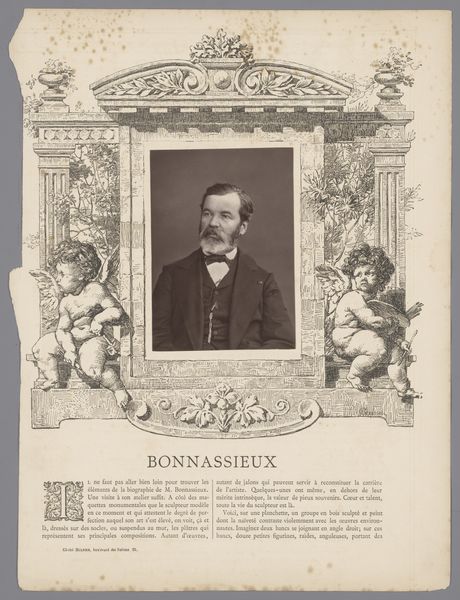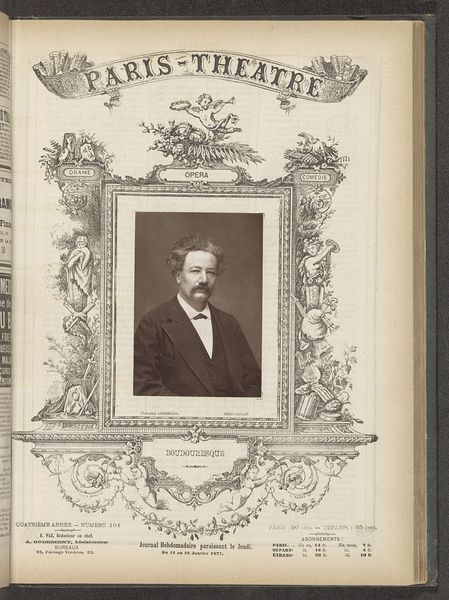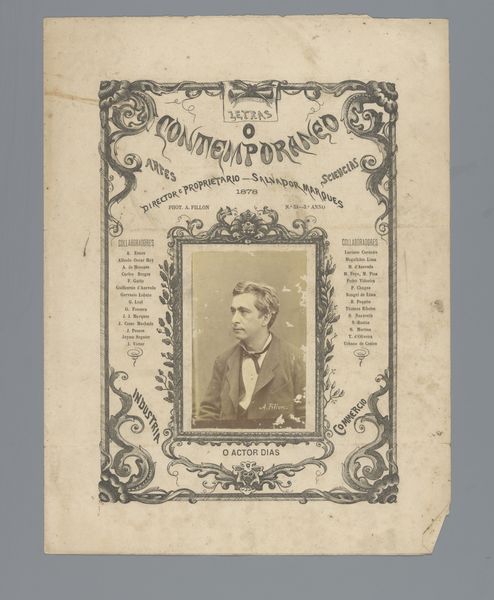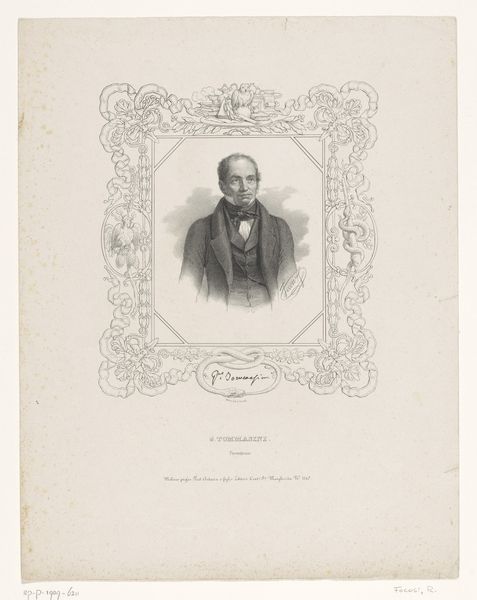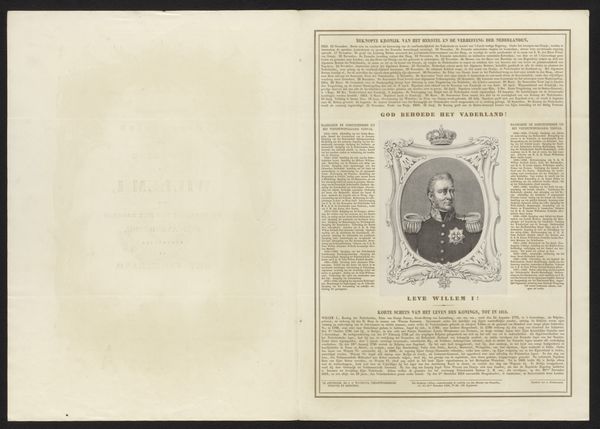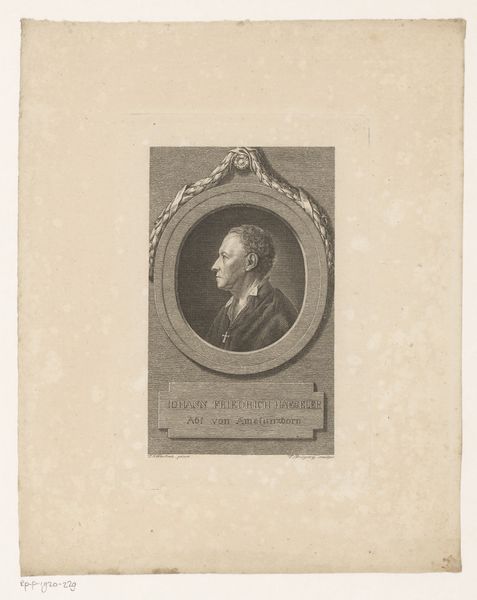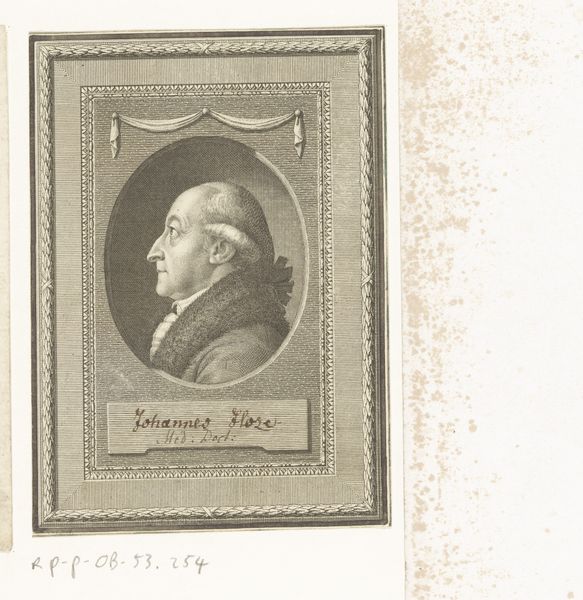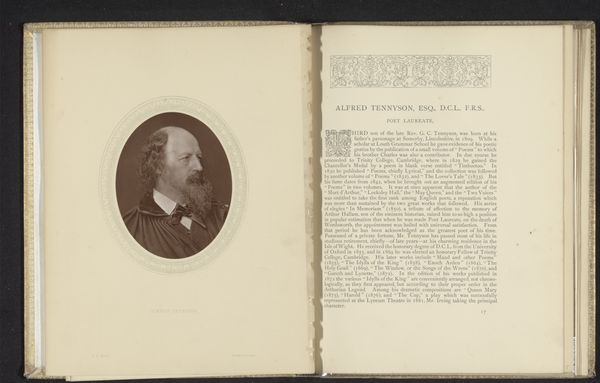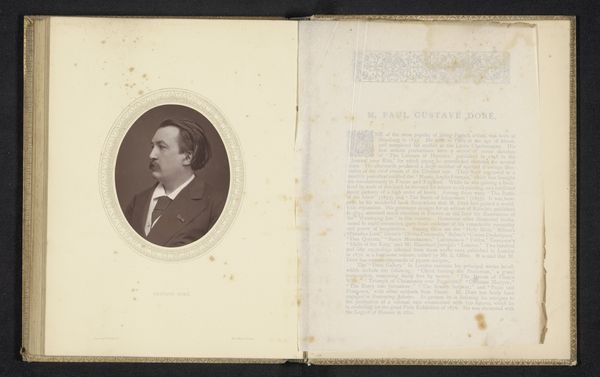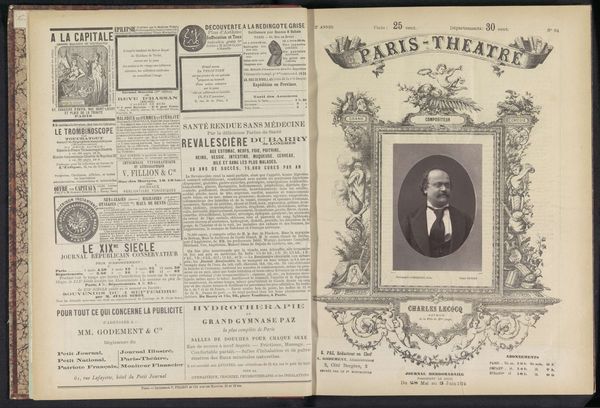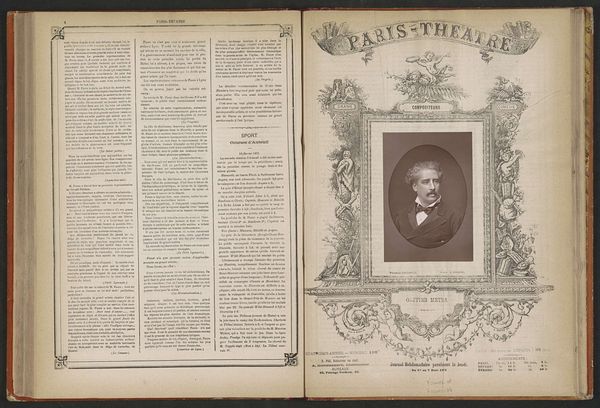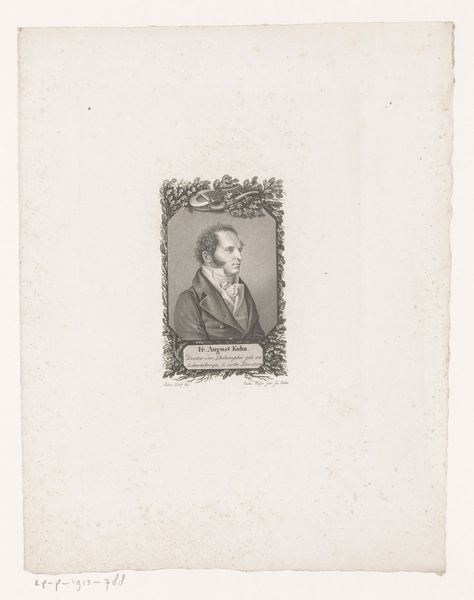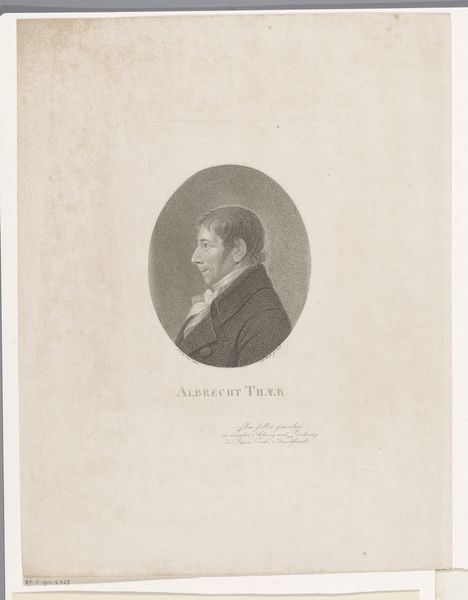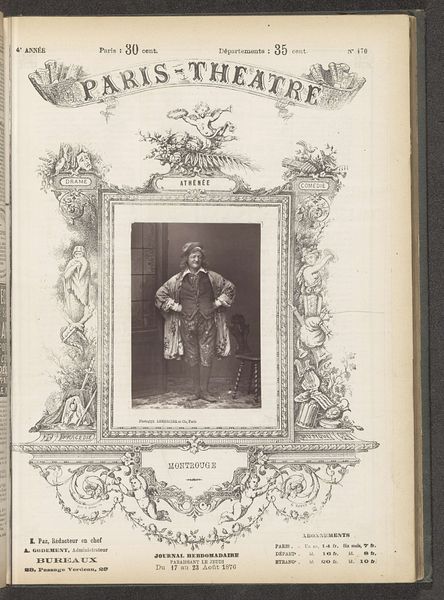
Dimensions: height 125 mm, width 86 mm
Copyright: Rijks Museum: Open Domain
Editor: So, this is a portrait of Aurélien Scholl by Etienne Carjat, likely before 1879, made using the gelatin silver print process. It has such a theatrical flair with that ornate frame, doesn't it? What catches your eye about it? Curator: The means of production here is key. Think about the materiality of the gelatin silver print. It democratized image-making. But look at the larger context. Here, it's re-packaged within this elaborate theatrical advertising. There's an interesting tension there: photography, a relatively accessible medium, used to promote something potentially exclusive like Parisian theater. What does that tension tell us about the relationship between art, commerce, and access? Editor: That’s fascinating. It makes you wonder about who the target audience was. I suppose they’re trying to bridge the gap between popular culture and high art. Curator: Exactly. It is fascinating to analyze this particular mode of photographic printing and its entanglement with class and the economics of art consumption at that time. Editor: I hadn't considered the connection to advertising and its role in disseminating and framing portraiture in that era. Thank you. Curator: And I found it helpful to be reminded of the practical, material nature of artmaking and how it affects our perceptions of value.
Comments
No comments
Be the first to comment and join the conversation on the ultimate creative platform.
